Important Aspects of Topical Minoxidil for Women
Hairloss in women can be caused due to various reasons. Whether it is due to a medical condition, genetic predisposition, or emotional and physical stress, hair loss can bring about physical and psychological changes in a person. This makes the treatment of hair loss even more important.
One of the most commonly used treatment options for hair loss in women is Minoxidil. It is a CDSCO-approved drug for treating female pattern hair loss. While it has a popular hair fall rescue image, is it really safe for women to use it? Can pregnant or breastfeeding women use Minoxidil? Well, here are all the answers and additional information you need to know about Minoxidil for women.
Female Hair Loss
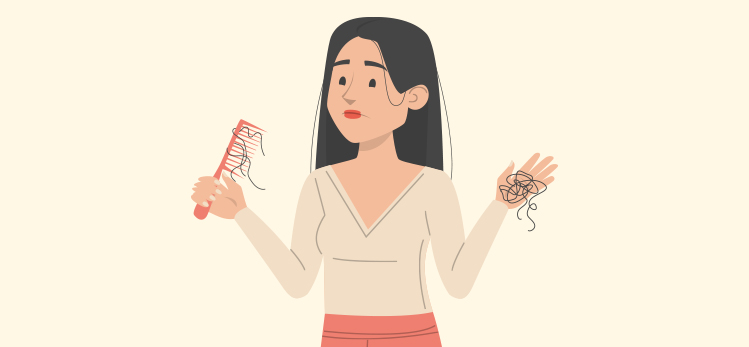
Female pattern hair loss is often recognized by thinning hair, decreased volume, and a widened center part. Ludwig classification determines the extent of this hair loss, with Types I, II, and III indicating the extent or severity of hair loss in women. The Sinclair hair shedding scale, on the other hand, assesses hair loss across five stages, with stage one being normal and stage five advanced.
It is also known as Androgenetic alopecia, and in women, it leads to thinning or hair loss in the crown area and overall hair fall, whereas in men, it leads to a receding hairline. In women, almost 40% show signs of thinning hair by 50 years of age.
In the human body, androgens are essential for normal male sexual development, regulation of hair growth, and sex drive. Excessive response to androgens in the body causes androgenetic alopecia.
To diagnose female pattern hair loss, your dermatologist will take a proper medical history and a thorough examination of your scalp. This helps in understanding if there are any scalp infections or inflammations causing hair fall. Along with this, a doctor may ask you to undergo some blood tests to check for thyroid levels, nutritional deficiencies like iron, zinc, etc., and hormonal imbalances that may be triggering hair fall in the patient.
Reasons for Female Hair Loss
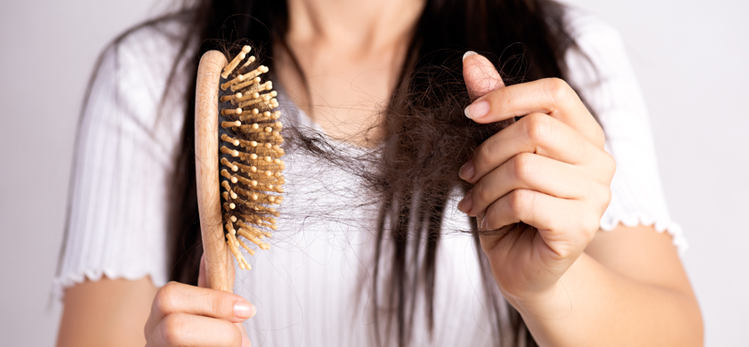
Hair loss can be caused due to numerous reasons, from an improper diet to a life change like a divorce or loss of a loved one. Here are some of the most common reasons for female hair loss:
Hair loss can be caused due to numerous reasons, from an improper diet to a life change like a divorce or loss of a loved one. Here are some of the most common reasons for female hair loss:
1. Restrictive diet causing improper nutrition and deficiency of vital vitamins and minerals. This is one of the most common reasons for hair fall in females.
2. Postpartum hair fall is very common in women, and medically it is called postpartum telogen effluvium.
3. Genetic predisposition puts younger adults at higher risk of having androgenetic alopecia in the older years. It is hence one of the reasons for hair loss.
4. Tighter hairstyles can most commonly lead to receding hairlines in women. Tighter hairstyling leads to traction alopecia.
5. Extreme emotional stress caused due to the loss of a loved one or a major life change can bring about the onset of hair fall known as telogen effluvium.
6. Thyroid disease is one of the most common reasons for hair fall in women and men. Thyroid-induced hair fall can lead to thinning of hair and acute hair fall.
7. Poor scalp health, infection, or inflammation can also cause the hair to fall out. This can lead to bald spots and hair falling out in a bunch.
8. Other factors include hormonal imbalance, sexually transmitted infections, stress, improper sleep cycle, and certain medications that can trigger hair loss.
Guide to Applying Minoxidil to Your Scalp
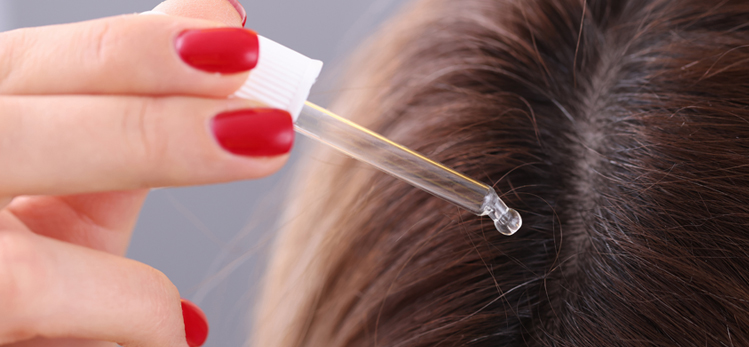
Minoxidil has shown great results in patients with patterned hair loss. Treatment using Minoxidil should be adhered to consistently. It is not a one-time treatment and needs to be used regularly for those with chronic hair loss. It may take about three to four months to show results, and one must be patient while using this drug.
That being said, here is how to use Minoxidil solution for female hair loss:
1. Ensure that your hair and scalp are dry. Use a dropper or the spray that comes with the solution and take aside 1ml of medication.
2. Apply this one to your scalp, especially when you see thinning of hair or bald spots.
3. Gently massage the solution into your scalp and leave it to air dry.
4. Wash your hands thoroughly and clean any solution that may have dripped onto your face or forehead.
5. Avoid using shampoo for at least 4 hours after applying this solution.
Minoxidil is safe for topical use in women, but there are many misconceptions about it that may or may not be true. So here is a list of all the myths you hear about Minoxidil debunked
1. Myth: Minoxidil can cause execessive hair shedding
Fact: False. During the first two months patient may lose or shed more hair than usual. This will be especially true, in the first 2-4 weeks as the follicles make way for new growth. This is actually a sign that Minoxidil is working and hair follicles are coming back to life.
2. Myth: Women cannot use Minoxidil.
Fact: False. In 2021, Minoxidil 2% and 5% Topical solution got approved by CDSCO for Female Pattern Hair loss.
3. Myth: Minoxidil is safe for pregnant women.
Fact: No. Minoxidil must not be used by pregnant or breastfeeding mothers as it can lead to fetal abnormalities.
4. Myth: You can use Minoxidil without a doctors advice.
Fact: False. Minoxidil is a prescription drug that requires a certified dermatologist to prescribe it for use. This is important for the doctor to monitor the dosage of use, any side effects, or progress of the condition in each patient.
Side Effects of Minoxidil

While many know of the absolute benefits of this drug, Minoxidil can also cause some minor side effects in patients. These side effects are not severe, but it is always advised to stop use if irritation or other side effects occur to avoid any further complications. Here are some side effects of Minoxidil:
Burning sensation
Stinging
Redness observed on the site of application
Skin irritation
Contact dermatitis
Hypertrichosis
Headache
Temporary hair shedding
Developing a severe reaction to this drug is rare, however, if you still observe any other side effects after application of Minoxidil like dizziness, irregular heartbeat, swelling of hands and feet, fainting, or difficulty in breathing, you must visit your doctor right away and discontinue use instantly.
Minoxidil Safety Gudie

Here is some minoxidil safety advice to follow while using.
Do not forget to wash your hands after every application
Use Minoxidil only if prescribed.
Do not combine its use with other topical medications without the knowledge of your physician.
People with high blood pressure are advised not to use it.
If you have a sensitive scalp, do not use Minoxidil.
Do not use Minoxidil over the infected or inflamed scalp.
Keep it away from children.
Along with using Minoxidil, it is important to treat the underlying cause of the hair fall or the treatment will not be very effective.
Minoxidil is only supposed to be used for the scalp. It is advised to keep the medicine away from direct contact with your nose, eyes, and mouth and wash it with cold water immediately in case of unintentional contact. Do not inhale the spray or use a shield to cover your face if using a spray pump. Also, do not use the spray or foam near an open flame, and do not try to open the pressurized can.
Conclusion
Minoxidil is a great treatment option for female pattern hair loss, however, it takes time to show results and for hair to grow thicker. If you are using this drug, you have to be patient to see the actual hair growth and reduction in hair fall. Do not use this drug without a prescription as it needs to be monitored for effectiveness or allergic reactions if any.
In case of severe hair loss, your doctor may prescribe other therapies in combination with Minoxidil. However, a doctor with your proper medical history can be better positioned to advise the same.
Maintaining a healthy and stress-free lifestyle and nutritious meals are also very important for optimal hair care.
Disclaimer: Minoxidil is a prescription only drug. It is to be taken only after a dermatologist's assessment and prescription. Please consult your dermatologist for further guidance.
Myth Busters HairFall
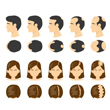
Androgenetic Alopecia - Everything You Need To Know
Have you been experiencing excessive hair fall over a prolonged period of time? It could be an early sign of androgenetic alopecia. It is a hair loss disorder common in both genders and can lead to progressive thinning and even baldness in some patients if not caught and treated early.

How To Make Hair Grow Faster For Men
A head full of healthy hair is a matter of confidence. Hair has its own mechanism of growing and shedding, and it is when this mechanism is thrown off that growth is hindered. Especially in the case of males, hair growth faces a lot of hiccups that can easily be managed.

Female Pattern Baldness - Causes & Treatments
Have you suddenly noticed an increase in the number of hair strands on your pillow in the morning? Or is your ponytail getting thinner by day? Well, you might be suffering from female pattern baldness. While that does sound scary, identifying it early on is key to treating this condition effectively. So keep reading to know what this is, how you can identify it, and most importantly, what treatments you can avail of to get your beautiful lustrous hair back.
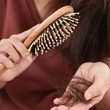
What Are The Reasons For Hairfall?
Almost everyone experiences some amount of hair thinning over the years. Shedding around 50 to 100 single strands of hair per day is considered normal. However, losing more than 150 strands a day, experiencing sudden thinning, or developing circular bald patches on your scalp are reasons for concern. Hair loss occurs when new hair doesn’t grow fast enough to replace the amount of hair you lose daily. Hair can fall due to various reasons, with hereditary hair loss and poor nutrition being the most common hair fall reasons.

Expert Approved Tips For Hair Growth
What can be more debilitating than seeing hundreds of hair strands shedding from your scalp every time you brush your hair? Also, excessive molting occurs during seasonal changes that can be very stressful for you. Although it’s okay to lose between 50-100 strands every day, according to the American Academy of Dermatology, the problem occurs when you start shedding more than normal. But that doesn’t mean you have to feel helpless as there are ways to grow your hair back. Even if you are coping with baldness or alopecia, certain hair growth tips from dermatologists can come to your rescue. Read on to discover how these tips can be your savior when abnormal hair fall problems are in sight.
Trending Videos
+ 17 Sources
LMRC - GGI-CO-A2-DMA-300026127-300026127-WM-J21-282
© 2021 Dr. Reddy’s Laboratories Ltd. All rights reserved.